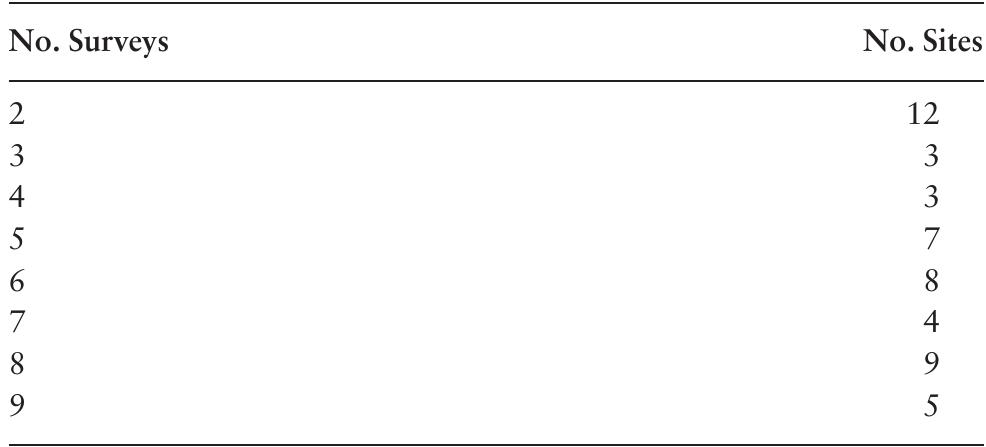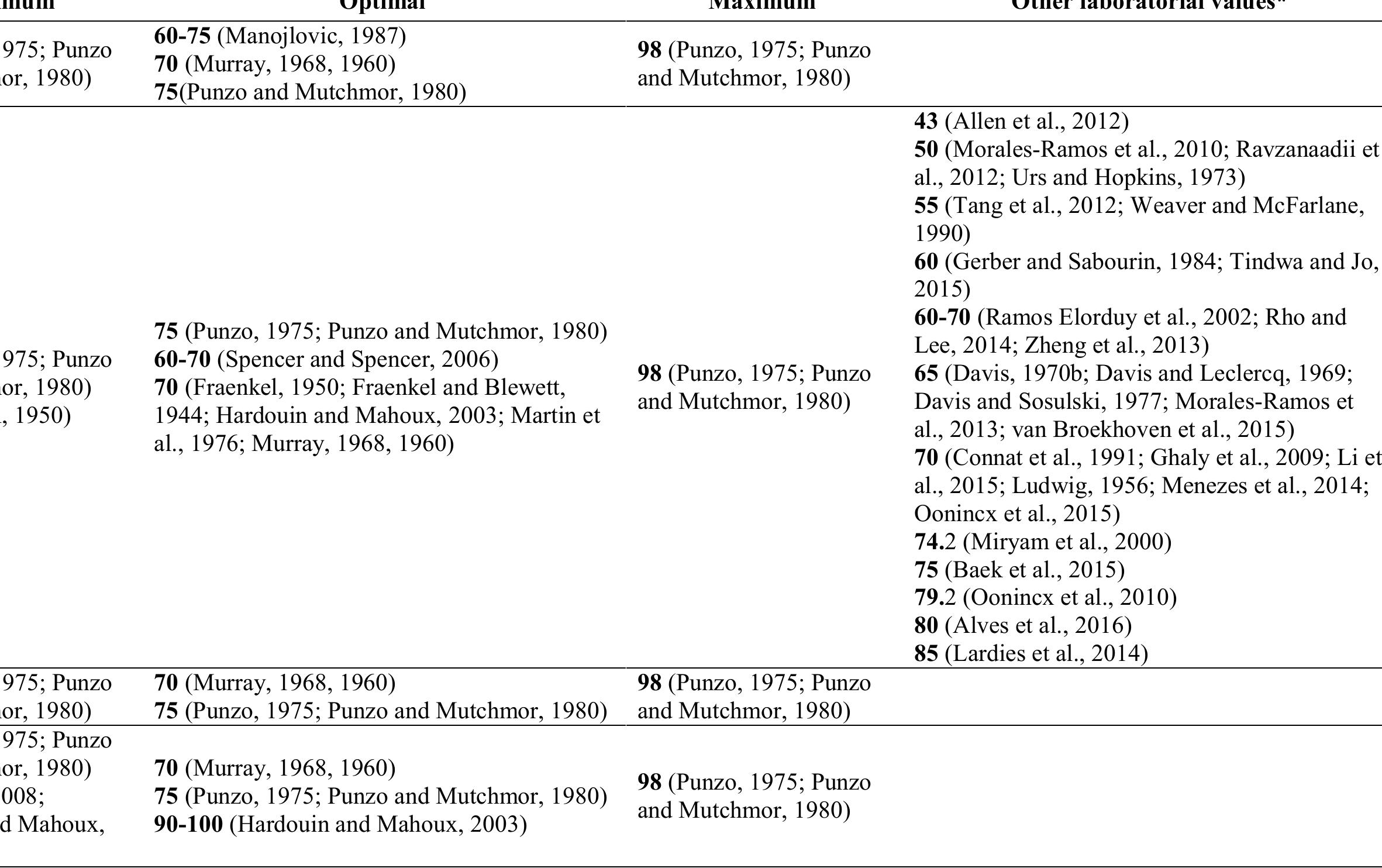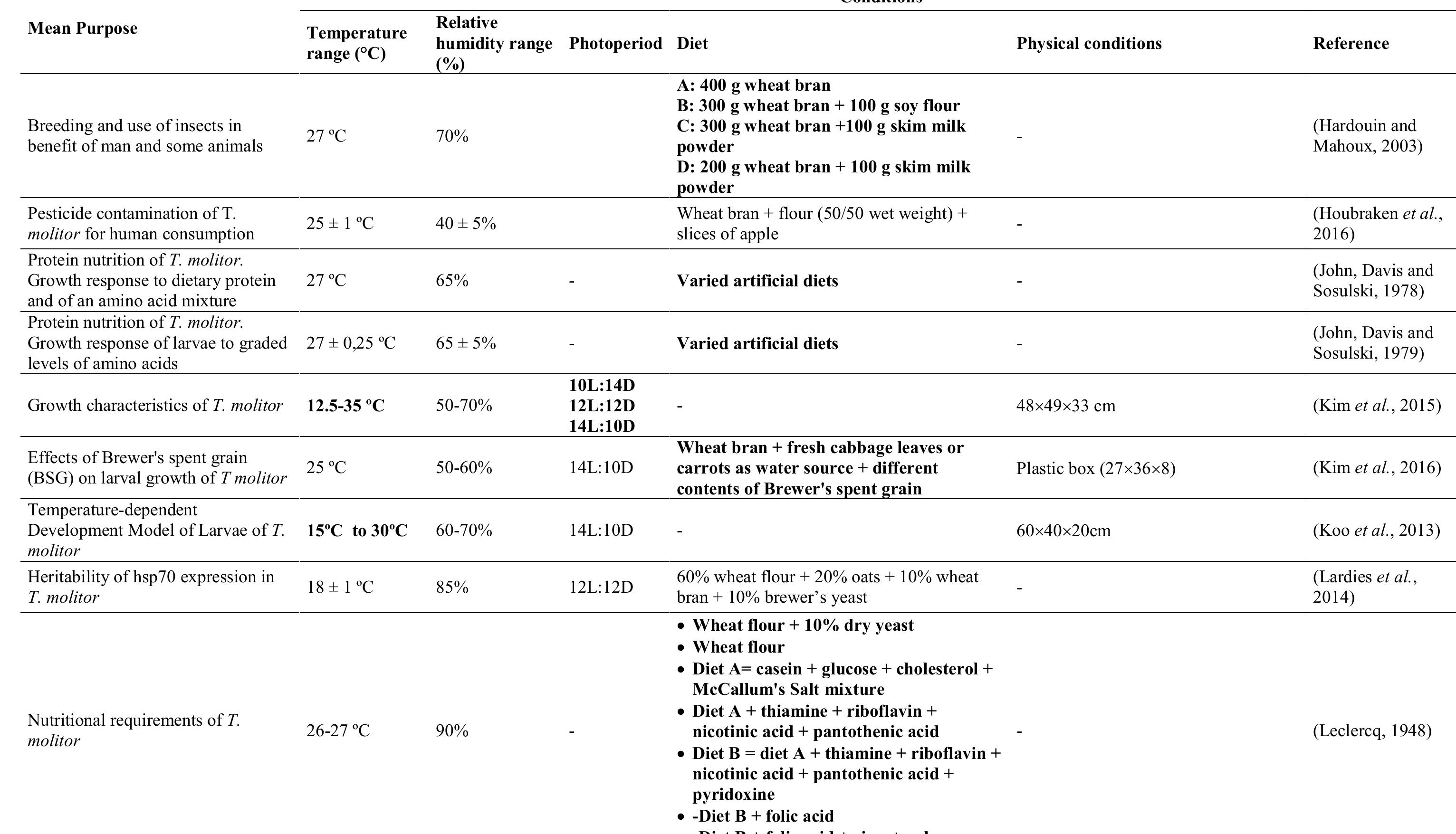Adaptogens are non-toxic plants that are marketed as helping the body resist stressors of all kinds, whether physical, chemical or biological. Their repeated administration (adaptation) gives rise to an adaptogenic or stress-protective,... more
This study was conducted to test five substrates (whole rice, broken rice, dovme, wheat and burghul) for the mass production of Beauveria bassiana isolate 5-4, known to be affective against stored-cereal pests. A solid-state fermentation... more
Background Despite the ecological and agricultural significance of bumble bees in Alaska, very little is known and published about this important group at the regional level. The objectives of this study were to provide baseline data on... more
Effective toxicity of different doses viz. 1.2 × 10 7 , 0.9 × 10 7 , 0.6 × 10 7 , 0.3 × 10 7 , 0.15 × 10 7 , and 0.9 × 10 6 PIB s / ml HaNPV along with distilled water as control was assessed against 2 nd and 4 th instar larvae of the... more
Recent research has shown that low genetic variation in individuals can increase susceptibility to infection and group living may exacerbate pathogen transmission. In the eusocial diploid termites, cycles of outbreeding and inbreeding... more
Studies on pathogenicity of M. anisopliae against I st-VI th instar H. armigera larvae revealed that larval mortality. The effect of Metarhizium anisopliae spore/ml against Helicoverpa armigera larval instars was significantly higher... more
Background Outbreaks of the casuarina moth, Lymantria xylina Swinehoe (Lepidoptera: Lymantriidae), which is a very important forest pest in Taiwan, have occurred every five to 10 years. This moth has expanded its range of host plants to... more
Farms biodiversity and food diversity of agricultural households are evaluated to understand some agroecology effects on cotton farms. This is a part of socioeconomic analysis of the agroecological transition underway in cotton zones of... more
The honey bee Apis mellifera (Hymenoptera) is being affected by many diseases. The elimination of organisms in the insect hemocoel requires hemocytes recognition and response to the invader. After recognizing a surface as "foreign,"... more
Podophyllum hexandrum Royle, a perennial herb belonging to herberidanceae grows on interior Himalayan ranges from Kashmir to Sikkim. Methanolic extracts of roots, rhizomes and whole plant as well as podophyllotoxin extracted from the... more
Background Outbreaks of the casuarina moth, Lymantria xylina Swinehoe (Lepidoptera: Lymantriidae), which is a very important forest pest in Taiwan, have occurred every five to 10 years. This moth has expanded its range of host plants to... more
The initial effects of the infection by AgMNPV in the total and differential counts of the hemocytes in Anticarsia gemmatalis (Lepidoptera: Noctuidae) larvae were studied. The total number of the hemocytes did not decrease in infected... more
1. The thermal biology of the meadow grasshopper, Chorthippus parallelus, a common, habitat generalist acridid species found in the U.K., was characterised and the influence of thermoregulatory behaviour for resistance against a temperate... more
BioOne Complete (complete.BioOne.org) is a full-text database of 200 subscribed and open-access titles in the biological, ecological, and environmental sciences published by nonprofit societies, associations, museums, institutions, and... more
Bollworms such as Helicoverpa armigera, Diparopsis watersi and Earias sp., are a major constraint of cotton production in Mali. Up to now, their control has primarily relied on chemical sprays. Finding ecologicallybased alternatives to... more
Glossina pallidipes salivary gland hypertrophy virus (GpSGHV; family Hytrosaviridae) is a dsDNA virus exclusively pathogenic to tsetse flies (Diptera; Glossinidae). The 190 kb GpSGHV genome contains 160 open reading frames and encodes... more
The book discusses the issue of nosemosis, caused by N. ceranae infection in bee colonies, which has emerged as a significant concern for beekeepers and veterinarians. Proper diagnosis of nosemosis, caused by N. ceranae, and the regular... more
Disc electrophoresis revealed aberrant electrophoretic patterns in the hemolymph proteins from Heliothis virescens (Fab.), Spodoptera eridania (Cramer), and S. frugiperda (J.E. Smith) larvae infected with Beauveria bassiana (Bals.) Vuill.... more
Background The diamondback moth, Plutella xylostella (L.) (Lepidoptera: Plutellidae), is a noxious pest of cruciferous crops all over the world causing serious economic damage. Management of insect pest generally depends on chemical... more
Bean weevil and maize weevil can cause considerable damage to stored grains. These insects are mainly controlled with synthetic chemical insecticides, which may bring serious problems to human and environmental health. Therefore, this... more
An entomopathogenic fungus belonging to the genus Hirsutella was found infecting the mango hopper, Idioscopus clypealis (Lethierry) (Hemiptera: Cicadellidae), for the first time in India in September 2011. The report of a natural control... more
1. The thermal biology of the meadow grasshopper, Chorthippus parallelus, a common, habitat generalist acridid species found in the U.K., was characterised and the influence of thermoregulatory behaviour for resistance against a temperate... more
The importance of honey bees to the world economy far surpasses their contribution in terms of honey production; they are responsible for up to 30% of the world's food production through pollination of crops. Since fall 2006, honey bees... more
The susceptibility of second instar Helicoverpa armigera (L-2) to seven strains of Beauveria bassiana, was tested under laboratory conditions at ICAR-IIHR, Bengaluru during 2016-17 using the larval immersion method. The highest virulence... more
The U.S. Fish and Wildlife Service developed national guidelines to track species recovery of the endangered rusty patched bumble bee [Bombus affinis Cresson (Hymenoptera: Apidae)] and to investigate changes in species occupancy across... more
Tenebrio molitor is one of the most reared species of insect at industrial scale. The entire life cycle of mealworms takes place in the same ecosystem and the duration of the different stages is highly dependent on environmental and... more
The initial effects of the infection by AgMNPV in the total and differential counts of the hemocytes in Anticarsia gemmatalis (Lepidoptera: Noctuidae) larvae were studied. The total number of the hemocytes did not decrease in infected... more
Citrus melanose, caused by Diaporthe citri, has been one of the serious diseases, and chemical fungicides were used for protection in many citrus orchards of Jeju Island. Establishing a disinfectant resistance management system and... more
The insecticidal activities, toxic and histopathological effects of clove, Syzygium aromaticum L. were studied. Adult male albino rats weighing 150-60 g maintained in standard cages with free access to food and water were used for this... more
The decrease in rice production can be caused by pests that can damage the quality and quantity. Pests that always attack rice plants are Brown planthopper. The BPH causes several effects, namely hopperburn, as a virus vector and can... more
The efficiency of the entomopathogenic fungi, Metarhizium anisopliae (Metsch.) Sorokin and Beauveria bassiana (Bals.) Vuill against 2 nd instar larvae of Spodoptera exigua (Hb.) was investigated under laboratory conditions of 27º ±1ºC and... more
We sequenced the Hyposidra talaca NPV (HytaNPV) double stranded circular DNA genome using PacBio single molecule sequencing technology. We found that the HytaNPV genome is 139,089 bp long with a GC content of 39.6%. It encodes 141 open... more
Many biotic and abiotic stressors impact bees' health, acting as immunosupressors and contribute to colony losses. Thus, the importance of studying the immune response of honey bees is central to develop new strategies aiming to enhance... more
This study characterized the distribution of total drosophilids within a cherry block and tree canopy by sampling ca. 1,700 cherries over six weeks in 2015. Our findings promote a better understanding of the spatial and temporal dynamics... more
As a sustainable food source for humans, mealworms (Tenebrio molitor) have a great deal of potential, due to the fact that they have a very favorable nutritional profile and a low environmental impact. For meal production, feed... more
An experiment was conducted to evaluate the effect of different concentration of entomopathogenic fungus, Metarhizium anisopliae (Metsch.) Sorokin against white grubs in the Entomology Laboratory, at Institute of Agriculture and Animal... more
Background Outbreaks of the casuarina moth, Lymantria xylina Swinehoe (Lepidoptera: Lymantriidae), which is a very important forest pest in Taiwan, have occurred every five to 10 years. This moth has expanded its range of host plants to... more
Frontiers in Sustainable Food Systems frontiersin.org Tovihoudji et al.. /fsufs.. absolute control. However, the highest plant growth parameters were obtained with MF which were similar to those obtained with TP _ (P > .). Likewise, at... more
oxicological, biological and histological effects of the isolated entomopathogenic fungus Metarhizium anisopliae from the red palm weevil adult on the newly molted 2 nd and 4 th instar larvae of the Egyptian cotton leaf worm, Spodoptera... more
The common bed bug, Cimex lectularius (Hemiptera: Cimicidae), is a blood-feeding ectoparasite of vertebrates, primarily humans. In contrast to many other hematophagous arthropods, such as kissing bugs, mosquitoes, sandflies, and ticks... more
Background Outbreaks of the casuarina moth, Lymantria xylina Swinehoe (Lepidoptera: Lymantriidae), which is a very important forest pest in Taiwan, have occurred every five to 10 years. This moth has expanded its range of host plants to... more
A weekly survey of pests present on cabbage crop was undertaken from October 2014 to January 2015. Data show that, several insect pests were found to attack cabbage crops which were identified under three families and two orders. These... more
White grub pests have been destroyed a lot of plantation of dry land. Farmers rely on synthetic insecticides to overcome the white grubs problem. Concerning the ecosystem pollution, it is necessary to improve the method of preparing M.... more
Bumblebees are important pollinators for many wild plants and crops. However, the bumblebee populations are seriously declining in many parts of the world. Hence, the bumblebee conservation strategy should be urgently addressed, and the... more
Background The baculovirus Spodoptera littoralis nucleopolyhedrovirus (SpliNPV) is an entomopathogenic virus utilized as a biological control agent of the Egyptian cotton leaf worm, Spodoptera littoralis. Several studies have focused on... more
Ginseng root rot caused by Cylindrocarpon destructans is the most destructive disease of ginseng. Six different fungicides (thiophanate-methyl, benomyl, prochloraz, mancozeb, azoxystrobin, and iprodione) were selected to evaluate the... more
Effect of botanical extracts on the biological activity of granulosis virus against Pieris brassicae
A granulosis virus strain infecting Pieris brassicae (PbGV) was isolated from the dry temperate region of northwestern Himalayas as a potential microbial agent for its management. The effect of different botanicals (having insecticidal... more
Effect of four plant extracts (vinca, ak, neem and chinaberry) were evaluated against 3rd instar larvae of the cabbage worm, Pieris rapae L. (Lepidoptera; Pieridae). The data proved positive correlation between mortality rates of 3rd... more


























































